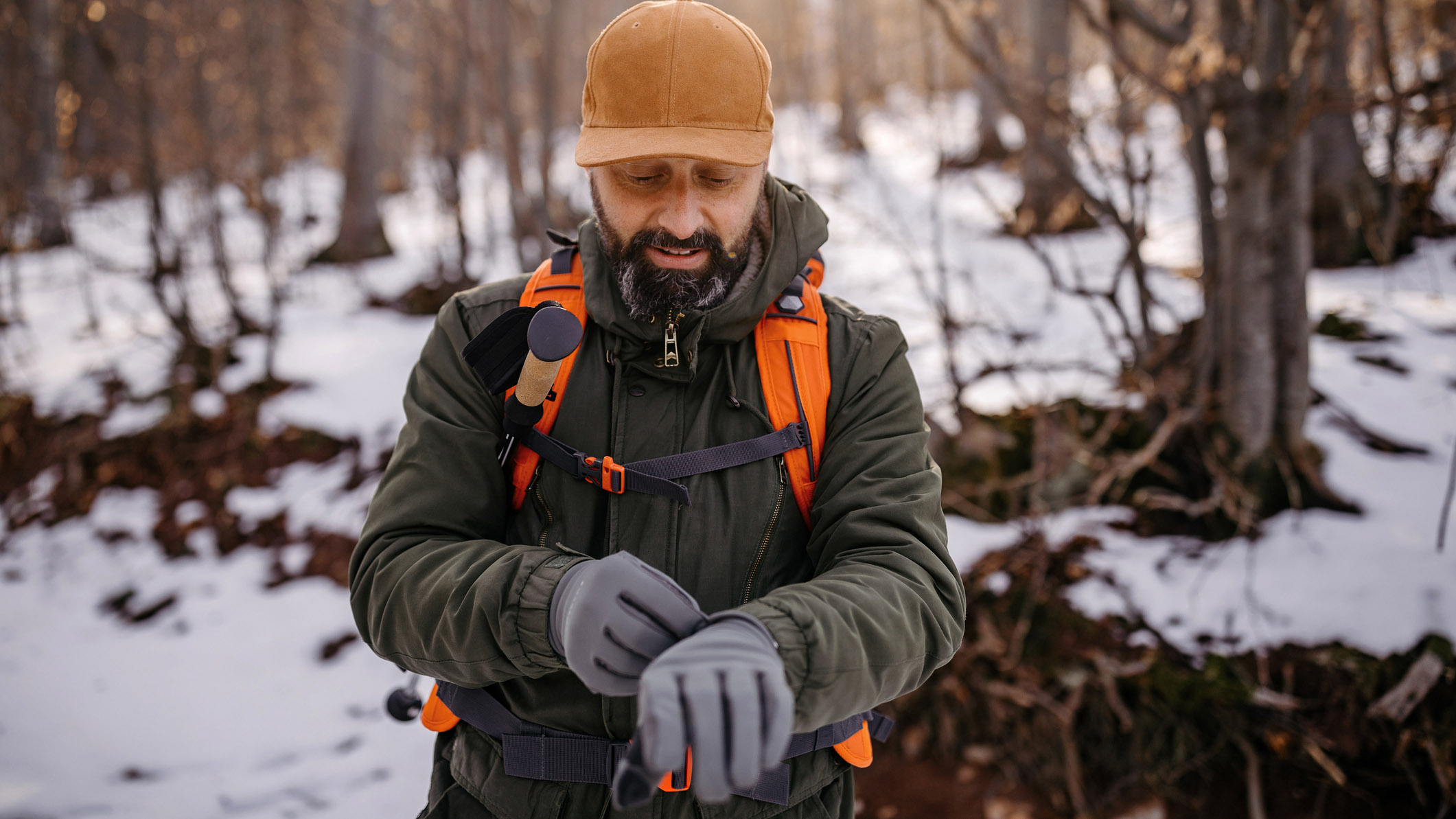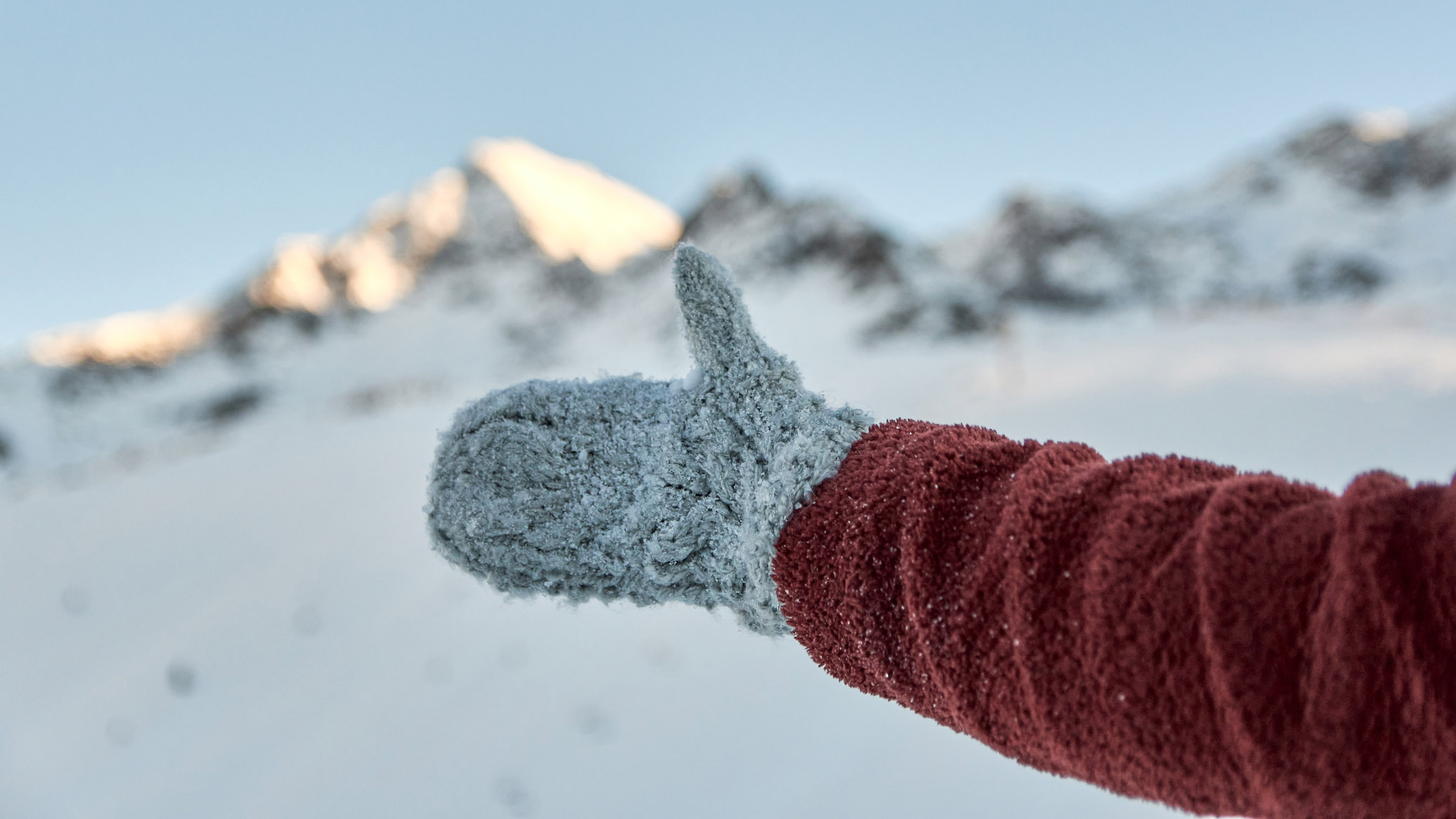
Cold hands are an amazingly divisive issue. Some of us can adventure in the snow for hours without gloves on seemingly without noticing frigid fingers, while for others, it can ruin a cold weather adventure and leave you feeling discouraged about going out until spring.
The truth is that temperature tolerance is a very individual experience and some of us simply have poor circulation and no amount of toughing it out is going to change that. If you’re finding that icy hands are making your winter jaunts feel intolerable, there’s actually a lot you can do to improve the situation and still enjoy skiing, snowshoeing and winter hiking. Read on for our top seven tips to keep your hands warm on winter adventures.
1. Start warm
This will probably sound obvious as soon as soon as you read it, but it’s astonishing how often we wait until we start to feel chilly before taking action. If you’re heading out in cold weather, dress in hiking layers to begin with. It might seem as though all you need are better gloves, but remember that when your body is battling the cold, the priority is to protect your vital organs, which is why your extremities get cold as your blood flows away from them.
Make sure you follow the cardinal rule of a wool base layer, an insulating mid layer and a windproof shell so your body is warm at the core, and believe it or not this will help more blood stay at your fingertips. Also choose a mid layer with thumb holes so you can easily layer up without leaving annoying gaps around your wrists.

2. Avoid restrictive clothing
In order for base layers and thermal leggings to do their job and wick sweat, they do need to sit against your skin, but avoid too-tight clothing, cuffs and watches – and lets not forget the notorious hair band round the wrist – that can cut off your circulation and lead to chilly digits.
3. Use liner gloves
Obviously, you need good gloves, and we’ll get to that next, but one thing that can really help those who are predisposed to cold fingers are slim-fitting liner gloves, which serve two main functions. First, liner gloves are thin and light, meaning you still have good finger dexterity, so even if you take your insulated gloves off to get something out of your backpack, you’re not exposing your hands directly to cold air.
Second, liner gloves wick moisture, which is a game-changer if it’s sweaty hands that are causing the problem. If you’re serious about keeping the cold off, check out the Rab Flux Liner gloves which can be worn on their own in milder conditions or when you’re setting up camp, and under your burlier gloves for cold ski days.

4. Protect your paws from wind and rain
Obviously, you’re going to want to invest in some insulated hiking gloves for general outdoor use, or ski gloves if you’re planning on hitting the slopes, but kind of like how the heaviest jacket isn’t always the warmest, don’t just go for the coziest pair of wooly gloves. Instead, seek out a pair that are both waterproof and windproof, like the The North Face Montana Futurelight Etip gloves, since wind chill and humidity can make things seem a lot colder than the air temperature. That way you can protect your digits from the worst of the weather while your liner gloves take care of any moisture on the inside. Just make sure your gloves have enough room to fit over your liner gloves.
5. Consider mittens
Not everyone loves the idea of mittens instead of gloves, because of course you lose finger dexterity, but as we explain in our article on gloves vs mittens, the fingerless variety of paw protector can be better for those with poor circulation. Mittens such as the Patagonia Nano Puff Mitt keep your fingers together so they keep each other warm.
6. Keep moving
One of the main reasons you’ll feel the cold anywhere is if you stop moving, and while your legs might not stop on a hike, your hands might simply be hanging out in your pockets or clutching your trekking poles, which can reduce circulation. Keep wiggling your fingers and even circling your wrists to get the blood flowing. You can also use the tried-and-true method of tucking your hands into your armpits for warmth – it’s low tech but it works.

7. Use hand warmers
When nothing else works, it’s time to call in the reinforcements and in this case, that means hand warmers. These lightweight devices can be popped in your backpack and when you need them, just activate them and slide them inside your gloves for a little extra warmth.







